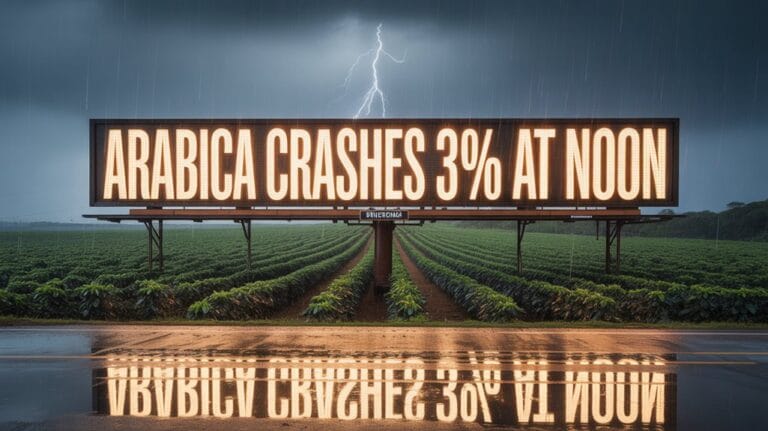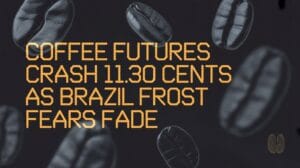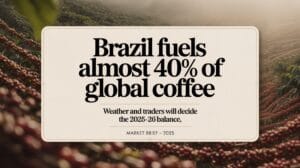Coffee futures tumbled on August 28 as traders took profits after a steep climb. By noon, December Arabica beans were down 2.02 percent. For the day the move shaved nearly 3 percent off prices. Analysts call it profit-taking after a 3.5-month rally. The quick drop proves how much price volatility still rules this market.
Earlier in the week the same contracts had tagged $3.92. On Thursday they traded near $3.82. Sellers rushed in once the chart printed a lower high. Open interest thinned again, showing fewer buyers chasing the run.
Sellers pounced as December Arabica slid from $3.92 to $3.82, thinning open interest and halting the rally.
Price volatility is also driven by tight supplies. Brazil’s new crop needs steady rain in September, and any sign of dryness brings new supply concerns. Certified stockpiles stand at 714,936 bags, the lowest level in fifteen months. Every extra dry week fans fears that inventories could slip further.
Across South America, shipments slowed again. The region’s export share fell below 36 percent in March. With fewer beans leaving the ports, roasters from Texas to Tokyo worry about filling orders next quarter. Futures traders react to each weather update and export tally, adding to the daily seesaw in prices.
Tariffs add another twist. A 50 percent US tariff on Brazilian beans has buyers testing other origins. That pushes some demand toward Colombia and Central America. Yet those countries can’t move enough volume to replace Brazil. The result is more supply concerns and another reason price volatility jumps with each news alert.
The pullback does not erase this year’s gains. Since January, Arabica futures have risen about 30 percent. Monday’s top tick of $4.2995 was the highest ever. Even at $3.82 traders see prices far above last fall’s low of $2.30. Roasters say they’ll soon pass the extra cost to shoppers.
Forecasters still watch Brazil’s sky. Consistent rain next month could calm nerves and allow prices to ease further. Without it, further supply concerns may push the market back toward the peaks.





